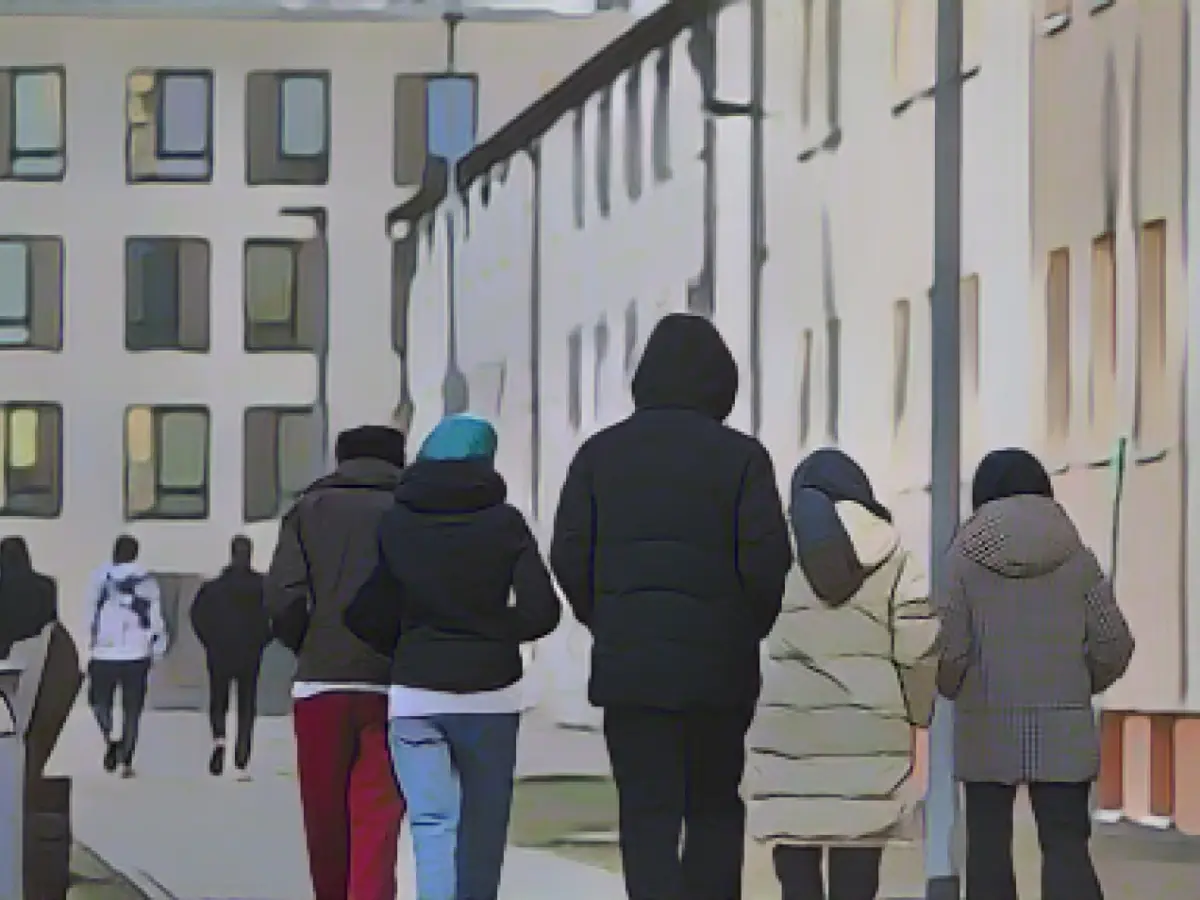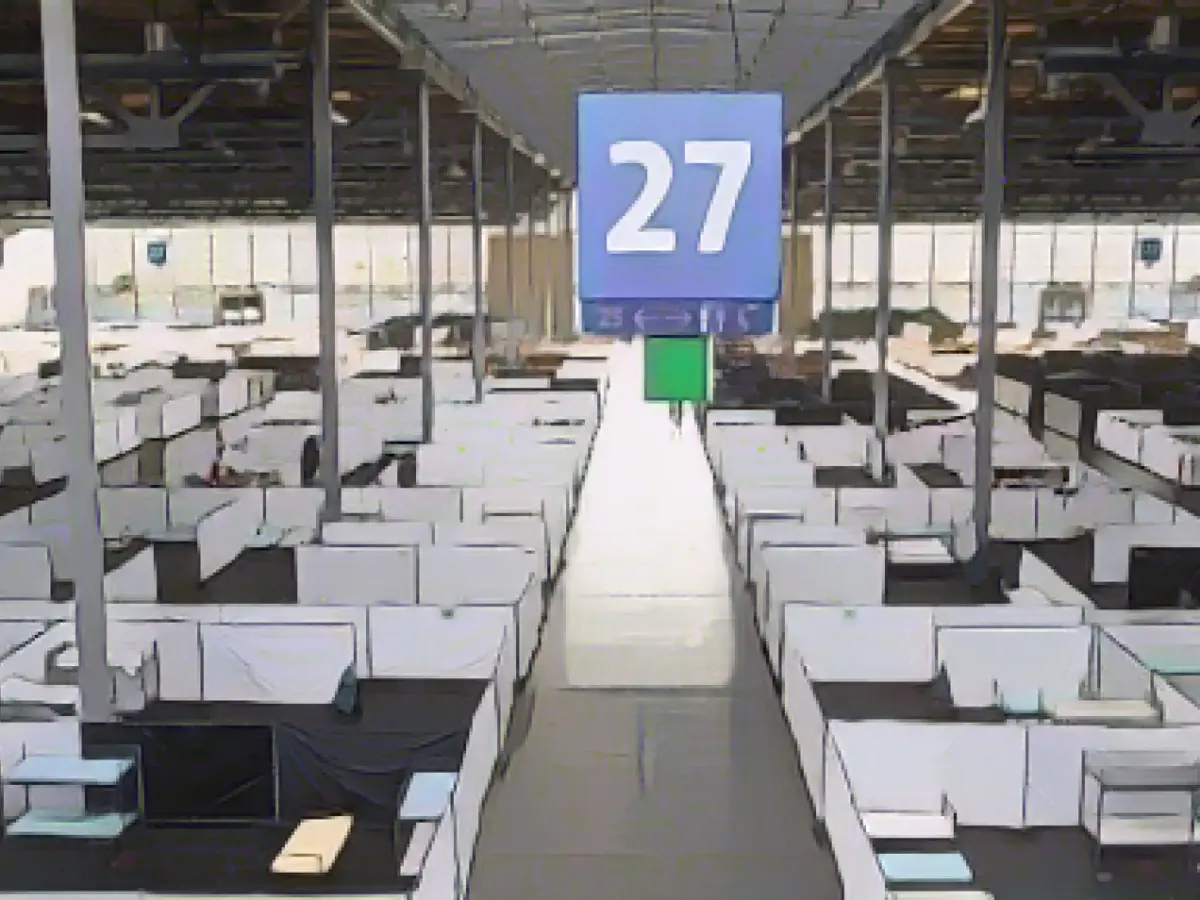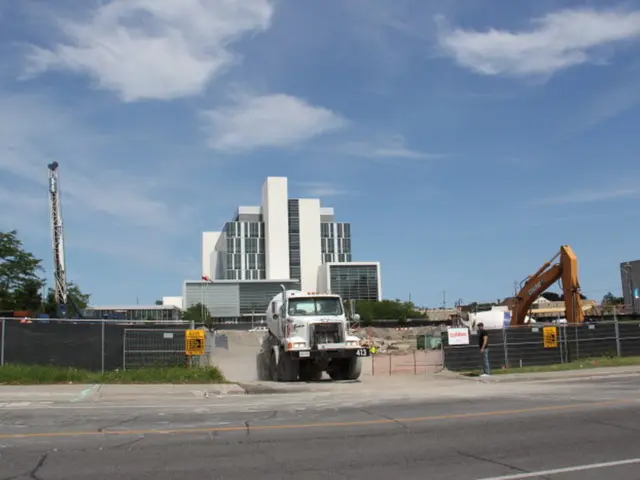Migrant Numbers Plummet in Brandenburg's Eastern Welcome Center
The influx of newcomers to Brandenburg's initial reception center in Eisenhüttenstadt has seen a dramatic drop, according to Olaf Jansen, head of the Central Immigration Office. The downturn follows stricter border controls at Poland and the onset of winter. While a typical day saw 80 to 100 refugees back in September, current figures are down to just ten to twelve arrivals a day.
"The extended border controls until February and winter weather are certainly contributing factors," stated Jansen. Last Thursday, the center took in five refugees through federal police intervention and two others who presented themselves at the gates. Five refugees were also transferred from other federal states.
The reduction in new arrivals has led to more referrals from other federal states, explained Jansen. As of December 14, around 3431 of the facility's 4,758 places were occupied, equating to a utilization rate of 72%.
Initially, the centers grappled with accommodating over 2,700 new arrivals each month. Tents had to be erected for temporary shelter, and additional space in containers was provided in Eisenhüttenstadt and Wünsdorf. By December 25, 300 more places will be available in Frankfurt (Oder). By the first quarter of 2024, an additional 200 spaces are set to be created.
Unfortunately, a 500-person dormitory in Eisenhüttenstadt, dating back to the 1960s, is due for closure in February. Jansen noted the age and lack of renovation as the reasons for the facility's demise, emphasizing the urgent need to extend reception center capacity despite the current decline. With warmer weather approaching, Jansen predicts a resurgence of migrant arrivals.
Key Insights
- Despite the closure of an outdated dormitory in Eisenhüttenstadt, there is a pressing need to expand the initial reception facilities in Brandenburg due to the anticipated influx of migrants coming springtime.
- The reduced number of refugees arriving in Eisenhüttenstadt is influenced by border control measures and winter weather.
- As the number of new arrivals dwindles, referrals from other federal states have increased, resulting in the transfer of refugees to Eisenhüttenstadt's initial reception center.
Sources: -
Enrichment Insights:
- Recent migration trends in Brandenburg and beyond are shaped by legislation, national origin, and application volumes.
- A revised citizenship law in 2024 aims to expedite naturalization processes while an uptick in requests from Syria, Poland, Ukraine, and Iran drives the need for new citizenships.
- 2024 records a record number of naturalizations in Berlin and Brandenburg.
- Germany's political landscape is marked by contention over migration policies.
- Opponents argue for stricter border controls, while advocates push for more accommodating approaches.
- The growing migration influx necessitates extended facility capacity for reception centers to adequately house and integrate individuals.
- Specific migration numbers for Brandenburg and Eisenhüttenstadt are not disclosed in the provided sources. However, the overall trend indicates an increase in migrants to Brandenburg, necessitating the expansion of initial reception facilities.








